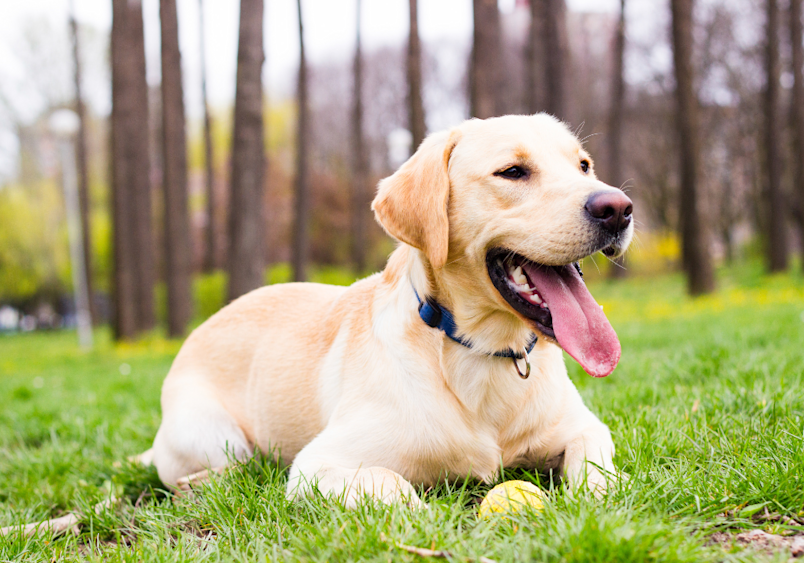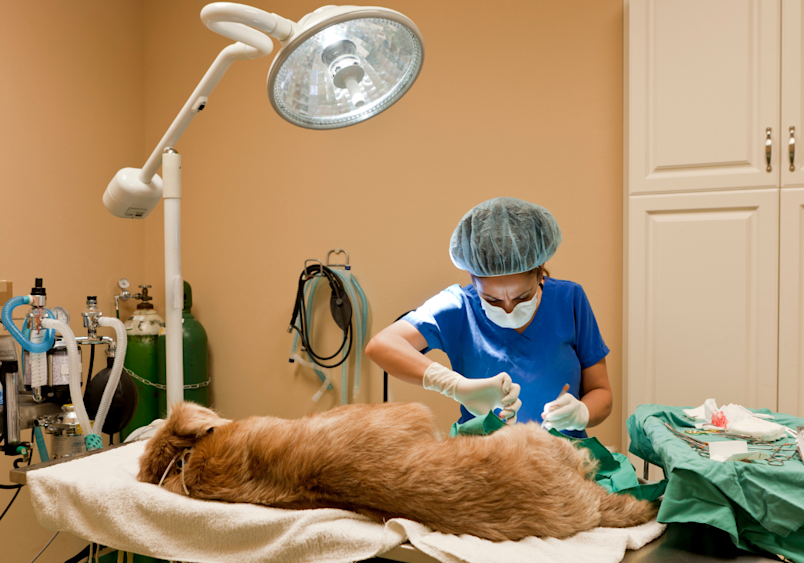
That soft, doughy mass you just felt beneath your pup's skin instantly sent your mind straight to the worst-case scenario:(Is it cancer? How fast is it growing? Oh no, the vet bills...) If it's squishy and moves freely, you’ve likely found a common, benign fatty tumor-a lipoma in dogs-but scheduling a check-up is non-negotiable to rule out dangerous look-alikes.
Most veterinarians have a similar mantra that they repeat to their clients: have any new lumps or bumps on your dog checked out as soon as possible. It’s impossible to tell which ones bad and which ones are no big deal without proper diagnostics. Fortunately, not all bumps mean that your dog is headed down the long road of cancer. In fact, some, such as lipomas, are usually just part of the normal aging process that dogs go through.
You know the saying, information is power. You can keep your anxiety at bay and help your canine bestie by understanding how to identify a common lipoma in dogs, recognize when monitoring turns into a necessary intervention and ensure your financial security.
Understanding Lipomas in Dogs
New lumps on your dog’s body can’t be good, right? So why does your vet seem to brush off a lump that they diagnose as a lipoma? Well, lipomas are also called fatty tumors because that’s what they are, fatty tissue that congregates together to form a soft, squishy, usually moveable lump just under your dog’s skin.
You see, fat in a dog’s body, and ours for that matter, is stored in cells called lipocytes. They have the ability to expand in order to accommodate vast amounts of fat. Sometimes neighboring lipocytes start to accumulate fat at a faster rate than the surrounding tissues, creating soft bumps. Most of the time these bumps grow fairly slowly and don’t bother your dog much.
Lipoma Types
The vast majority of the time lipomas are not cancerous, they’re not contagious, and most of the time they don’t even require treatment.
Simple Lipomas
Over 90% of lipomas in dogs will be this simple type. They’re soft, moveable, and just under the skin. They will have definite edges because they are what we veterinarians call encapsulated. They don’t branch out or attach to the surrounding tissue. These lipomas are easily removed if needed, and once they’re gone, they’re gone. They don’t come back.
Infiltrative Lipomas
Infiltrative lipomas are still clumps of overly fatty lipocytes, but instead of staying segregated, they start to intertwine into the surrounding tissue. They may reach out and attach to deeper layers of skin or even into the muscle. Though they’re still not dangerous in a cancerous way, the removal process is more difficult, and they tend to come back.
Multiple Lipomas
Lipomas generally appear as singular lumps that can vary in size, but some dogs will pop up with multiple lipomas in different areas across their bodies. These lipomas may be different sizes depending on the rate of growth and how long they have been at it.
Intra-abdominal Lipomas
Not all fatty tumors are easily seen on your dog’s body. Some of them grow internally and when big enough can compress abdominal organs. Intra-abdominal lipomas have to get pretty big before you start seeing signs of discomfort such as abdominal pain, diarrhea, constipation, or urinary issues.
Malignant Liposarcomas
As with most tumors, the benign, or non-cancerous, form has a malignant, or cancerous, counterpart. In lipoma’s case it’s called a liposarcoma. These rare types of fatty tumors tend to invade local tissue. Most of the time they don’t spread to other parts of the body but are more worrisome.
Which Dogs Get Fatty Tumors?
We don’t know exactly why some dogs get fatty tumors and some don’t, but there does seem to be some correlation with age, weight, and breed. Older, overweight dogs are more likely to develop fatty tumors, and Labrador Retrievers seem to have a special propensity for them.

Age Factors
Fatty tumors are slow-growing, so it takes time for them to get big enough to show up. That’s why they tend to pop up in middle aged and older dogs rather than puppies.
Weight Factors
The more extra fat a dog has, the higher chance they have for lipomas. Although skinny dogs can get lipomas too, lipomas tend to develop more in dogs that are overweight or obese. Since weight gain and obesity also follows high calorie diets and hormonal imbalances such as hypothyroidism, you may see fatty tumors more often in dogs eating these diets or with these health issues. Sterilized dogs may also have a higher chance of developing lipomas as the reduction in sex hormones can lead to weight gain.
Breed Predispositions
Though not completely understood, there are some dog breeds that lean toward lipomas more than others. Commonly affected breeds include Labrador Retrievers, Weimaraner’s, Doberman Pinschers, Springer and Cocker Spaniels, Beagles, and Golden Retrievers.
What Does a Lipoma Look Like on a Dog
The majority of lipomas in dogs are going to be right under the skin. You’ll be able to get your fingers around them and give them a little wiggle. They should feel soft and squishy and are often circular or oval in shape. The size of a lipoma can vary.
Fat is found in any area of a dog’s body, so it would make sense that lipomas could pop up anywhere as well. You may see them on the legs, neck, or chest, and they tend to grow pretty slowly over the course of several months or more.
How to Tell if It’s a Lipoma
The only surefire way to tell if your dog’s lump is a lipoma is to see your veterinarian, but if your dog’s lump has the telltale squishiness and mobility, it’s likely a lipoma. Most dogs aren’t going to mind a lipoma unless it develops in their armpit or groin where it can actually interfere with their leg motion if it gets big enough.
Cyst vs Tumor
Lipomas aren’t the only soft and squishy lump that can form on your dog; that’s why it’s important to get a veterinary diagnosis. Another potentially soft lump is a cyst. These are fluid-filled sacs that can form within the skin or in other tissues. Cysts can develop due to trauma, blocked glands, or they may have a genetic backing. You likely won’t be able to tell the difference as the texture and size may be the same; however, cysts may be less mobile and grow more quickly.
As for more serious types of tumors, other soft tissue growths, such as fibrosarcoma, mast cell tumors, or liposarcomas are malignant tumors that can look and feel like lipomas but may spread either locally or throughout the body.
When to See a Vet for Lipoma in Dogs
Any new lump or bump deserves veterinary attention. You just never know what you’re dealing with by the outward look and feel alone. You’ll especially want to see your vet if your dog’s lump grows very rapidly, changes shape, color, or texture, or if your dog is showing other signs such as not eating, lethargy, or weight loss.
If your dog’s lump is already diagnosed as a lipoma, your work isn’t done. You’ll still want to keep an eye on it to monitor its growth and to make sure it isn’t bothering your dog. Most of the time, a lipoma will go untreated unless it gets to a size that it’s starting to interfere with locomotion or is causing your dog discomfort.

Diagnostic Process of Lipomas in Dogs
The diagnostic process for lipomas is the same as with other lumps. Your vet needs to get a look at the cells that make it up. To do this, they may take a sample using a needle and syringe or do a biopsy. From there, they can look at the sample under a microscope and determine the cellular makeup.
Treatment Options for Lipoma on Dogs
Most of the time, removing a lipoma isn’t necessary for your dog’s health, but in some cases, lipomas can get in the way of normal leg movement or cause your dog discomfort in some other way. There are also some concerns about lipomas getting big enough that when they do need to be removed, the size of them creates other complications that you and your vet just don’t want to deal with.
With this in mind, surgical excision tends to work really well for simple lipomas that are easily contained in their capsule if removal is deemed necessary. Removal gets a little more complicated for invasive lipomas as portions of the surrounding tissues need to be removed as well to help prevent recurrence.
Your veterinarian may also try a form of liposuction where they attempt to suck out as much of the fat as possible from the lipoma. Again, this works best with simple lipomas and is a less invasive way of removing fatty tissue.
Another promising treatment for lipomas in dogs is injection therapy. Corticosteroids are injected into the lipoma guided by ultrasound with most lumps regressing completely within six months. This is a longer treatment method but a less invasive one than surgery.
You may also come across some natural or dietary treatments for lipoma in dogs, but there needs to be more research done to determine if these are viable options. Speak to your vet if you have any questions about these.
Making the Treatment Decision
Since the vast majority of lipomas are just cosmetic blemishes that really don’t affect your dog’s health, deciding when to treat and when not should be a decision made between you and your vet. Speak to your vet about your dog’s particular lumps and bumps, including where they are, their rate of growth, and potential health implications to decide the best course of action.
Cost of Treating Lipoma in Dogs
Though most lipomas in dogs don’t need treatment, it’s always best to be prepared. Having medical insurance for dogs can help with the diagnostic costs and any bill related to rechecks or removal. The costs can really add up:
Initial Diagnosis (FNA & Lab Fees): $125 – $350
Complex Diagnostics (Imaging): $300 – $600+
Simple Removal Surgery: $250 – $700.
Complex/Infiltrative Removal: $1,000 – $1,800+
And if it does end up being something more serious, like a malignant mast cell tumor, you could be looking at $5,000-$10,000 or more in treatment costs.
Having good pet insurance in place from the start means that you can always say yes to whatever treatment your pup needs. So at least you can cross finances off of your worry list.
Consider adding an optional dog wellness plan to help cover the costs of regular visits where your vet can keep an eye on any lumps or bumps, as well as preventative medications and vaccinations.
Living With Fatty Tumors in Dogs: Long-Term Management
For many dogs, lipomas are a natural progression of age. Fortunately, they tend to not create many problems, and most dogs can live a happy, normal life. You can help them with this by carefully monitoring their lipomas and watching for signs that they’re becoming an issue.
Get a measurement on each lump or bump and then periodically recheck to see how fast things are growing. If located in the armpit or groin, make sure lipomas aren’t interfering with movement, and check them for signs of irritation, such as bruising and abrasions.
Weight loss may help with lipomas and will do a lot for your dog’s overall health, so consider changing dog food to a lower calorie version and upping exercise. Keep in touch with your veterinarian; they can help you monitor lipomas as well as all facets of your dog’s health.
There’s no true way to prevent lipomas, but you can do your best by keeping your pup at a healthy weight, monitoring them for any changes in their skin or signs of illness, and routinely seeing your veterinarian.
Lipomas in Dogs
Lipomas are one of the most common bumps that may show up on your dog’s skin. Fortunately, they’re nearly always non-cancerous, and most don’t even require treatment. Your veterinarian can diagnose a lipoma with a few simple tests, so any time you notice a new lump or bump, be sure to seek veterinary advice.
Every belly rub can be an anxiety trigger when a lump is involved. Hopefully you feel more confident in your knowledge now to recognize the difference between a minor and major concern. Continue to run your hands across their skin every day. Let those daily pets and scritches transform from an anxious search into a simple, loving routine check-up and bonding moment.